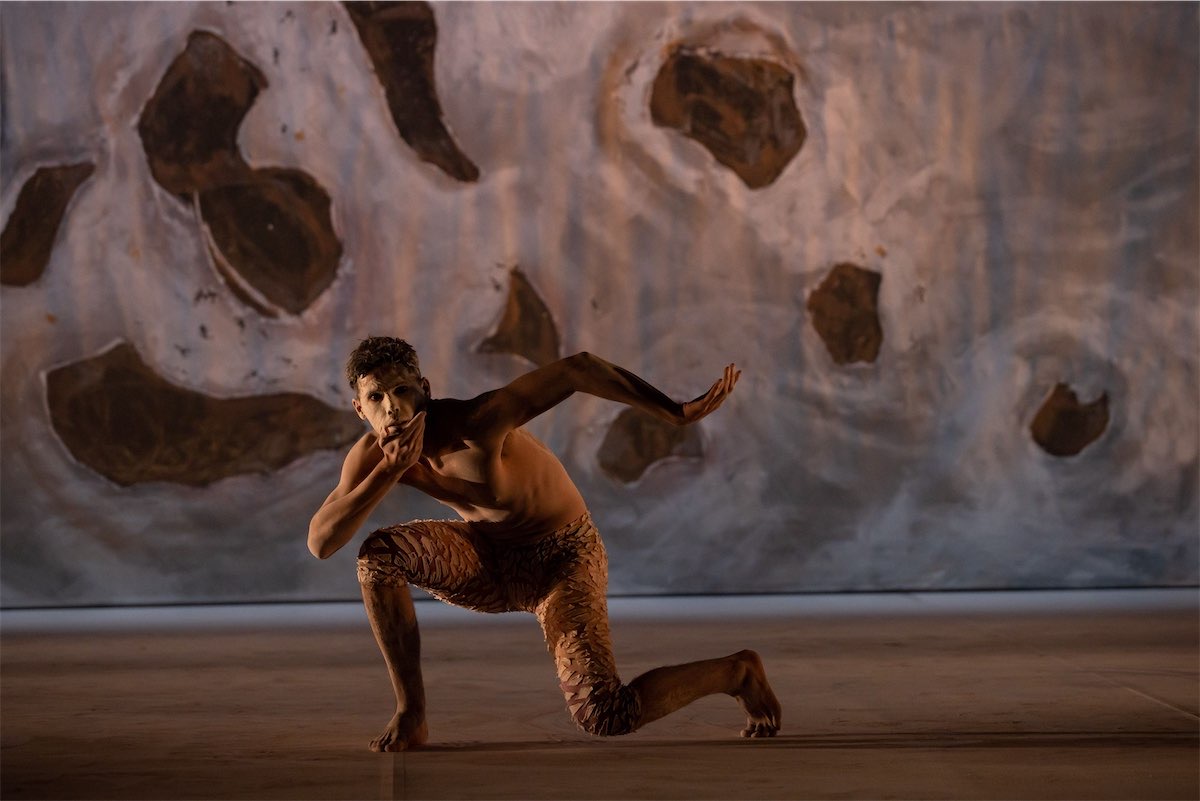
AS Stephen Page prepares to hand over the artistic baton of Bangarra Dance Theatre in 2023 to Frances Rings, he can be in no doubt it’s going to exactly the right place, for her career in Australian dance and connections to its oldest culture are deep and abiding.
Rings’ dance work “Terrain”, a love song to Kati Thanda (Lake Eyre), has been revived and it encapsulates her life’s work to date.
Born in Adelaide, the daughter of a Kokatha woman and a German immigrant father, Rings spent her early years with her father in Port Augusta, SA, and would travel on weekends with him to the Flinders Ranges.
She pays tribute to his powerful influence on her sense of country: “Although he was from Germany, dad had respect for country and he loved it, loved the light and the rich culture, he really connected with it and passed it on to me,” she says.
Later in life she met her wider maternal kinship group on the west coast of SA, near Ceduna, enriching her connection to country, but it was initially her father’s influence.
“I’m not really a big city person, so I moved out of Sydney when I was around 30 and went to live just south of the Royal National Park,” she says. And later, after she’d had children, moved to the central coast while continuing to work in Sydney.
The relevance of her love of country is immediately obvious in “Terrain”, which relates specifically to Kati Thanda, but even so, creating a dance work about a landscape must have presented challenges, I suggest.
I am quickly given to understand that her capacity to meet such challenges didn’t come from nowhere.
When Rings was 17, after completing Year 12 in Ipswich, Queensland, she won a place in the National Aboriginal and Islander Skills Development Association (NAISDA) and left for Sydney, coming to Stephen Page’s attention.
Offered a spot at Bangarra, she performed in Page’s productions, then became the first choreographic artist-in-residence for Bangarra, going on to study at the Alvin Ailey American Dance Theater. Back in Australia, she choreographed works for Bangarra, the WA Ballet, Tasdance and Atamira Dance Company in Auckland.
It was a time of discovery. In “Unaipon”, Rings’ 2004 work for Bangarra, she sought to celebrate the life of author and inventor David Unaipon, whose image is featured on the Australian $50 note.
“I went to Murray Bridge in SA where his closest living relative was still living and I talked about my ideas and my own experience of not knowing about him,” she says.
In 2012, Page asked Rings to choreograph a work depicting Aboriginal views on landscape and “Terrain” was to be the result.
She took a trip to Marree, the town close to Kati Thanda and found Arabana elder Reginald Dodd, who ran his own tours.
“I took the tour with David Page and designer Jacob Nash,” she says.
“We went out with Uncle Reg, talked to him and he gave us an idea about the significance of the country, what we could expect and how the sense of belonging becomes like a part of our body.”
Of the late David Page, she reflects that his music reflected his passion for “what country means to us and our connection to land, rights and ritual”.
“Uncle Reg then came on as cultural consultant and we did three trips and then another trip for research and then another trip with all the dancers when we did a performance for the community,” she says.
“We do it every time, it’s a part of our creative cycle. We engage a consultant so that we can be guided as to what we can use and what we can do.”

Rings comes to the artistic directorship of Bangarra with formidable creative and organisational experience, gained over many years.
In 2016, she returned to her alma mater, NAISDA as the head of creative studies, overseeing auditions and the entire youth education program. In 2019 she moved to Bangarra as associate director, continuing in her multiple creative and administrative roles.
“I’ve been working at this for a long time. I don’t just sit around and just create dance,” she says.
“I was never handed this job on a platter. In my first year out of NAISDA I got an opportunity to follow the traditional dancers in the company and observe them and sometimes even understudy them.
“It teaches you how to be in a company, how you have to start all over again and that makes you humble.
“I worked hard to get here; as a mother, it’s been really challenging, but I’m really proud of where I am. A lot of other indigenous women look to me and I do my best to honour the wonderful legacy I’m invested with.”
Bangarra Dance Theatre’s “Terrain”. The Playhouse, July 28-30.
Who can be trusted?
In a world of spin and confusion, there’s never been a more important time to support independent journalism in Canberra.
If you trust our work online and want to enforce the power of independent voices, I invite you to make a small contribution.
Every dollar of support is invested back into our journalism to help keep citynews.com.au strong and free.
Thank you,
Ian Meikle, editor




Leave a Reply